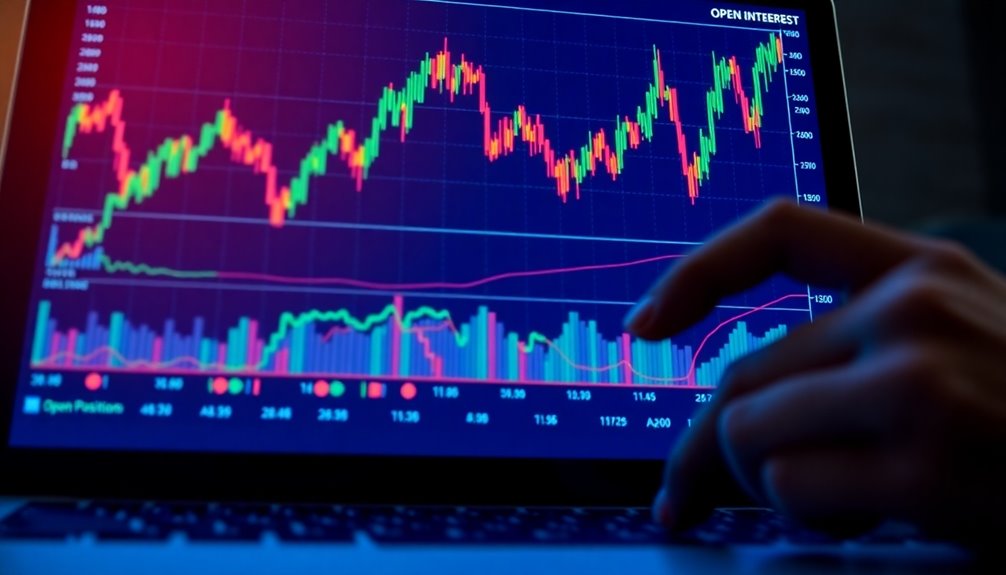Bitcoin's recent open interest data shows a surge in new positions, suggesting that more traders are entering the market. With open interest hitting a record $39.46 billion, this $2 billion increase in just 24 hours signals heightened market activity. This trend raises questions about potential price movements and volatility. Understanding the implications of this influx could provide valuable insights into the future direction of Bitcoin. What might this mean for your trading strategy?

As you explore the world of Bitcoin trading, understanding open interest (OI) becomes essential for gauging market dynamics. Open interest represents the total number of active positions in derivatives like Bitcoin futures and options. By monitoring OI, you can gain valuable insights into market sentiment and the strength of trends. OI increases when new contracts are created and decreases when contracts are closed or expire. This makes OI a crucial metric for assessing how many traders are currently holding positions in the market.
Recent trends indicate that Bitcoin futures' open interest has reached record highs, hitting $39.46 billion, surpassing the previous record of $39.03 billion. This surge reflects increased trading activity and heightened investor interest, with a notable $2 billion increase in OI within just 24 hours. Such significant shifts in open interest often precede periods of increased volatility and participation, signaling that investors expect strong price movements. In fact, rising open interest can suggest an imminent price breakout, as seen with Bitcoin's recent trends.
High open interest typically indicates stronger liquidity in the market, which can make it easier for you to execute trades without causing significant price fluctuations. Conversely, a decline in OI may signal weakening market sentiment and could suggest that traders are closing their positions. By keeping an eye on OI, you can better manage your trading strategies, confirming trends and assessing market stability. Additionally, high open interest often confirms trend sustainability, helping traders make more informed decisions.
When combined with volume data—another crucial metric—you can gain a comprehensive view of market dynamics. Understanding the relationship between OI and market participation is key. High OI suggests increased engagement from traders, which can influence price trends.
It's important to note that while high open interest can indicate a robust market, excessively high OI in a tight price range might raise the risk of flash crashes due to sudden shifts in orders. You should stay aware of these potential risks as you navigate your trading strategies.
The Commitment of Traders report provides additional insights into open interest by detailing the positions of various market participants. Monitoring these statistics helps you anticipate future price movements and manage your risk effectively.
With over 75% of short-term Bitcoin holders currently in profit, the upward momentum seems promising. In summary, keeping a close watch on Bitcoin's open interest data can significantly enhance your trading decisions and market understanding.









